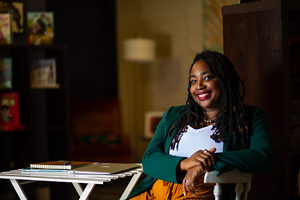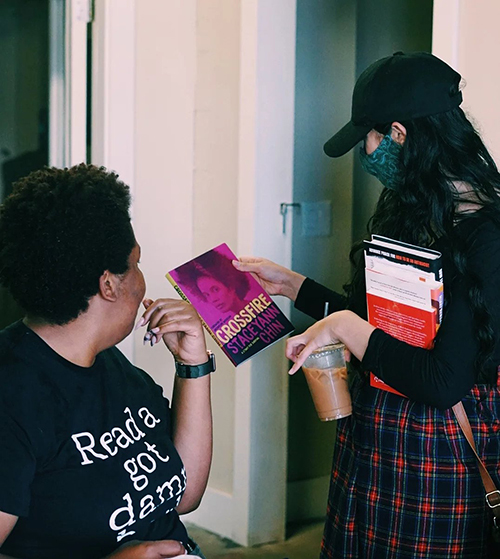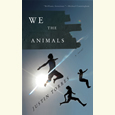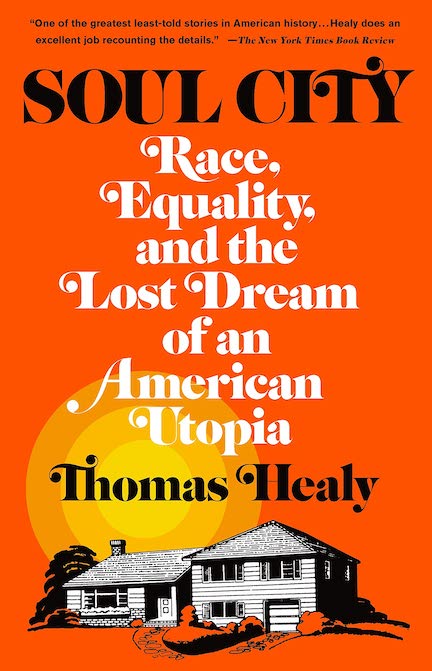Connecting the Landscape with the Quiet of the Sky
Amy Greene talks with Chapter 16 about her gorgeous new novel, Bloodroot
Amy Greene’s first novel—a sprawling epic called Bloodroot—is getting the kind of attention that most debut novelists can only dream about: The Atlanta Journal Constituation called it an Appalachian Wuthering Heights. And Entertainment Weekly gave the book a grade of “A,” concluding, “This is a terribly sad, breathtakingly good read. Greene, get to writing another one quick.” The Knoxville News Sentinel ran a profile—complete with a video interview online—of the 34-year-old author, who grew up near Morristown in east Tennessee. And The Boston Globe called ita “sprawling, intricately layered debut novel,” noting that “Greene does a masterful job of crafting a palpable setting—you can smell the trees, hear the graceful cadence of Appalachian speech, and feel the wind.” Amy Greene will read from Bloodroot at Davis-Kidd Booksellers in Nashville on February 8 at 7 p.m., and at Davis-Kidd Booksellers in Memphis on February 9 at 6 p.m. She found time in her eighteen-city tour to answer a few questions from Chapter 16.
Chapter 16: The sensory details in this book—the sights and sounds and smells and textures of Bloodroot Mountain—are astonishingly clear. Is it fair to say they’re the result of intimate firsthand observation, and not just a good imagination or intense secondary research? Did you grow up on a mountain like Bloodroot?
 Greene: I did grow up close to nature, as Myra Lamb does in Bloodroot, surrounded by mountains and hollers and creeks. I spent most of my childhood outdoors, which led to an intimacy with the Appalachian landscape that shows in my writing.
Greene: I did grow up close to nature, as Myra Lamb does in Bloodroot, surrounded by mountains and hollers and creeks. I spent most of my childhood outdoors, which led to an intimacy with the Appalachian landscape that shows in my writing.
Chapter 16: You’ve mentioned in other interviews that you married your high-school sweetheart when you were only 18 and had your first child at 20—a life trajectory that leads some of the characters in Bloodroot, though certainly not all of them, to despair and even ruin. Do you see yourself more clearly in some of these characters than in others?
Greene: I drew on my own experience as a young wife and mother to tell the stories of the women in Bloodroot, although my path in life has led to happiness rather than ruin. I think the tragedies my characters face have more to do with the men they end up with and their circumstances than the choice to marry and have children young. There are pieces of me in each of the characters, but I put more of myself into Myra’s son Johnny, who is a writer, than into any of the female characters.
Chapter 16: Bloodroot is an incredibly ambitious book—told through six very different voices and spanning four generations—especially for a first-time novelist. Did you ever think to yourself, “Why didn’t I start with a simple little coming-of-age tale instead of an epic?” What kept you writing whenever problems in the narrative arose?
Greene: I didn’t know what Bloodroot would become when I first picked up my pen. I imagined the characters first and spent a long time getting to know them, writing elaborate character sketches in my notebook. When a story began to evolve, it was difficult to organize all those narrative threads into a plot, but by that time I was so invested in the lives of the characters that I couldn’t give up until I reached the end and knew how everything would turn out for them.
Chapter 16: The timeline of Bloodroot covers eighty years—and, through family stories, even longer than that—concluding in the present year, but you’ve included almost no references to historical events or popular culture. Aside from a mention here and there of the Depression and, late in the book, of television, the story is essentially timeless, with events taking place according to the rhythms of nature and the drives of human desire. Do people like Byrdie Lamb still exist in the foothills of the Smoky Mountains, or is it your sense that the these characters, and this world, are now gone forever?
Greene: Women like Byrdie do still exist here—she’s a composite of the sweet old women I’ve had in my life, like my aunts and my neighbors and the ladies I’ve gone to church with—but those women are dying, and there is a fear that part of our mountain culture will die with them. My hope is that by writing about Byrdie and the Appalachia she knows, I’m doing my small part to help preserve it.
Chapter 16: Your book is getting an enormous amount of attention in the national media. Do you see your own life changing as a result? I hear you just went on the first airplane ride of your life, courtesy of the Bloodroot book tour.
Greene: I’ve experienced lots of wonderful firsts since the publication of Bloodroot, like flying. I had always been nervous about getting on a plane, but I found it much more exciting than scary. Before now, I haven’t spent much time outside the South, and it’s been great to see that people are friendly and welcoming everywhere. I’m just trying to soak all this up, and enjoy every second of it.
Chapter 16: Any plans for a second book?
Greene: I finished my second book right before I began the book tour. It takes place in the Tennessee Valley during the Great Depression, about a little girl who goes missing from a town called Yuneetah in the months before it’s flooded by a dam.
To read a review of Bloodroot click here.
(This interview originally appeared on February 2, 2010.)





